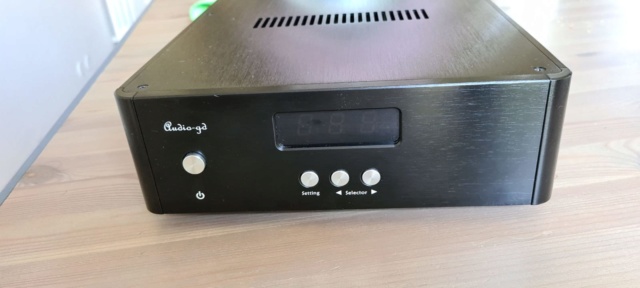

It requires that a member of his staff remote-access your computer to run the firmware upgrade. To add to the complexity, Kingwa contacted me to ask if I’d like to try firmware that sets the output of the DSP to be more accurate. In pure Non-Oversampling (NOS) mode, three types are available, with the 3rd version the highest quality, but the other two, less accurate versions available if required. However inside the DAC, via jumpers it is possible to turn on the PLL and dithering (recommended by myself and others) and set the oversampling to 4x, 2x, or even off altogether.

I noticed significant performance differences between the inputs.īy default, the R2R 7 uses an 8x oversampling FIR, with no PLL or dithering used. The dual I2S inputs recognise that no matter how much Kingwa improves on the quality of the inputs, many customers want to use a separate, high-quality transport of their own construction.

My original unit had neither, so since the maximum options for input are only available from I2S and USB, I stuck with USB via an iFi iUSB 3.0 for most of the review. The USB now includes isolation and its own power supply. The current options include 2x S/PDIF (with one optionally being AES/EBU), optical, 2x I2S (HDMI and RJ45) and USB. The R2R 7 has 6 inputs, switchable from the front panel. How it adds up in terms of sound was another matter, and not a simple one at that.

11 processors in all reside in the R2R 7, making for some serious computing power. The main digital processor is still an Altera Cyclone IV, situated on the centre digital board, however even S/PDIF processing has been moved to programmed FPGAs. As soon as you covered one thing, someone would suggest a tweak or change to settings or source and you’d be back again listening for subtle differences. In addition to that, the USB input was updated, first with isolation, and now with a dedicated power supply.Īlongside the features that can be turned on and off, the changes made reviewing the R2R 7 quite a challenge. As well as changes to the inputs, two different firmware versions are available – the default “smooth” version, and the more lively “accurate” version, which increases the accuracy of the output of the digital processors. With the previous flagships using the now discontinued PCM1704UK R2R DAC chip, the new flagship DAC from the Chinese company uses double-sided resistor ladder boards with switches, error correction provided by multiple on-board FPGAs. Around a year ago Audio-gd announced the R2R 7, the first new discrete ladder DAC flagship from Audio-gd.


 0 kommentar(er)
0 kommentar(er)
